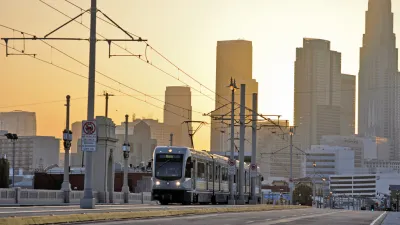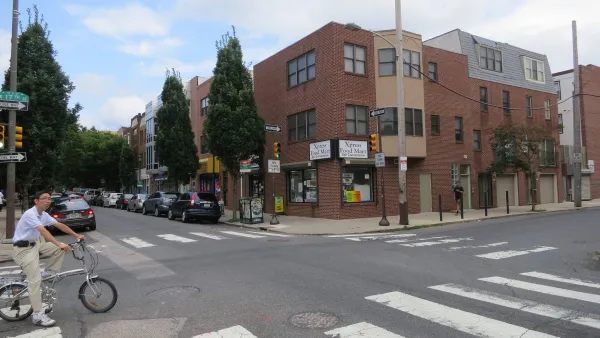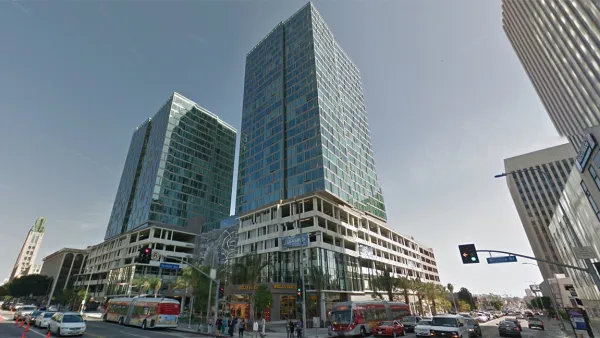Architecture critic Christopher Hawthorne describes an L.A. in flux, at once beholden to its postwar image and pushing in a new direction. The city, he says, faces existential questions on a scale unmatched elsewhere in the nation.

In an interview, Christopher Hawthorne discusses why L.A. may be entering its third great incarnation. "All of us continue to be disappointed by how much of the reading of L.A. just assumes that the city started in 1930 or 1945 [...] Southern California was really built around the convenient marriage between streetcar lines and real estate speculation. That laid down the network on top of which the freeways were built."
After post-WWII suburbanization replaced an older car-less Los Angeles, today's push for public infrastructure is both reversal and revolution. Hawthorne remarks, "An easy way to think about what's happening is there was a time when nine out of every ten changes to a boulevard in L.A. were done with the idea of drivers in mind. Parking lots were added, sidewalks shrunk, buildings were destroyed along boulevards. Now the opposite is true; the vast majority of changes to boulevards are in favor of a balanced street."
Following an era suited to the individual, the city is considering its collective ambitions. "A lot of the basic ways in which the city defines itself are up for grabs in a way that's not true in any other major American city that I can think of. It's not true in San Francisco, New York, or Chicago. Those cities are in many ways fixed. In L.A., existential questions are still up for grabs."
L.A.'s "third era" may well include architectural rediscovery in the public space. Hawthorne says, "[L.A. has] become a very constrained, regulated, and risk-averse place in terms of new architecture. That's still surprising for people outside of L.A. to hear [...] We do have a great history of public space and civic architecture that we lost sight of."
FULL STORY: Q+A> Christopher Hawthorne: Christopher Hawthorne makes the case for a post-suburban city

National Parks Layoffs Will Cause Communities to Lose Billions
Thousands of essential park workers were laid off this week, just before the busy spring break season.

Retro-silient?: America’s First “Eco-burb,” The Woodlands Turns 50
A master-planned community north of Houston offers lessons on green infrastructure and resilient design, but falls short of its founder’s lofty affordability and walkability goals.

Delivering for America Plan Will Downgrade Mail Service in at Least 49.5 Percent of Zip Codes
Republican and Democrat lawmakers criticize the plan for its disproportionate negative impact on rural communities.

Test News Post 1
This is a summary

Test News Headline 46
Test for the image on the front page.

Balancing Bombs and Butterflies: How the National Guard Protects a Rare Species
The National Guard at Fort Indiantown Gap uses GIS technology and land management strategies to balance military training with conservation efforts, ensuring the survival of the rare eastern regal fritillary butterfly.
Urban Design for Planners 1: Software Tools
This six-course series explores essential urban design concepts using open source software and equips planners with the tools they need to participate fully in the urban design process.
Planning for Universal Design
Learn the tools for implementing Universal Design in planning regulations.
EMC Planning Group, Inc.
Planetizen
Planetizen
Mpact (formerly Rail~Volution)
Great Falls Development Authority, Inc.
HUDs Office of Policy Development and Research
NYU Wagner Graduate School of Public Service





























